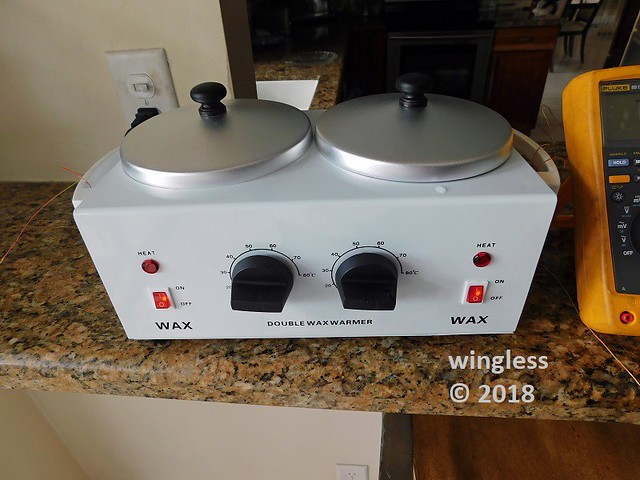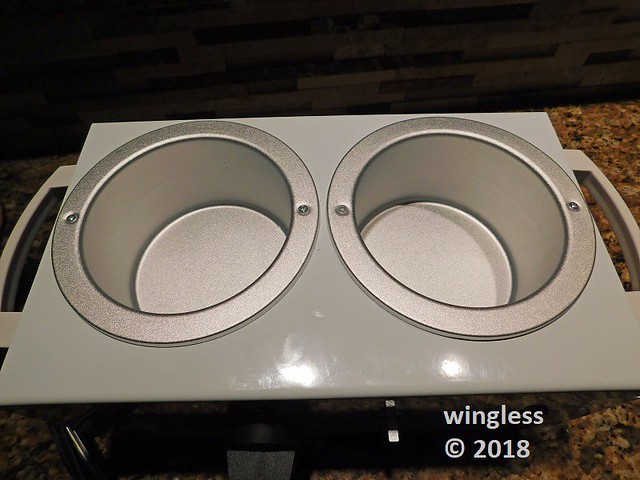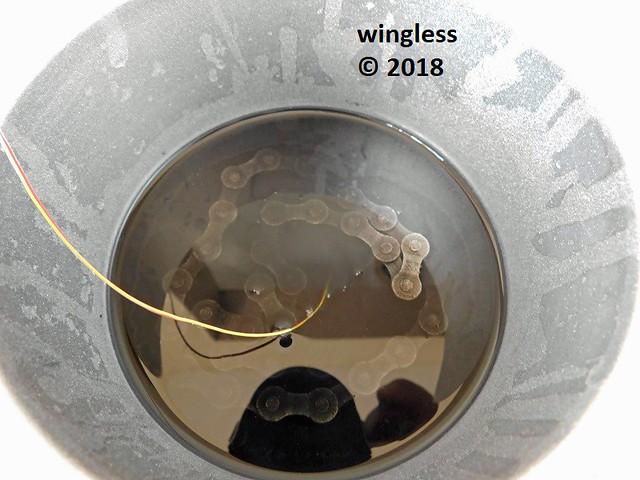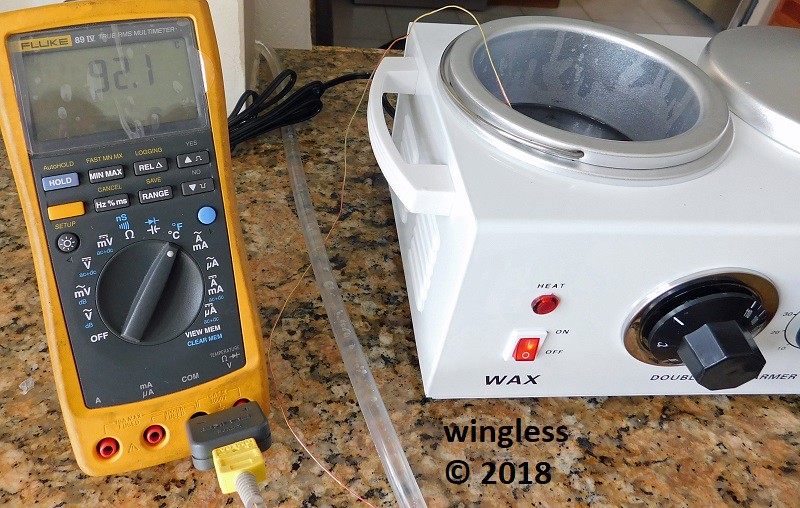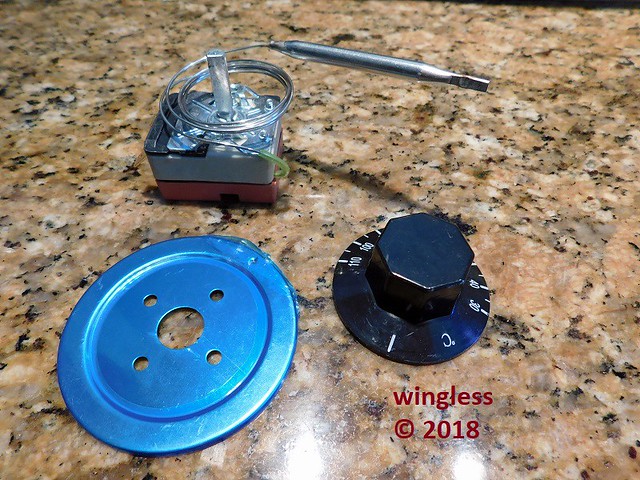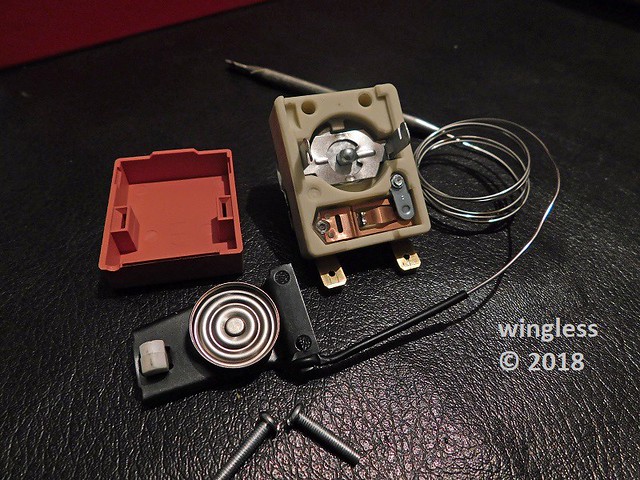A 220W double pot wax warmer was purchased to permit application of
Molton Speed Wax to the chain.
Note that this reply shows my modifications to a UL appliance. These are show for informational purposes only. I strongly recommend AGAINST anyone ever modifying a UL appliance.
The adjustable temperature setpoint dial on the wax warmer front panel shows a maximum temperature of 80°C. My measured maximum temperature was only 77°C. The Molton Speed Wax is specified to be applied at 93°C. I purchased an adjustable capillary tube thermostat w/ a 110°C maximum setpoint. That thermostat also didn't get hot enough, so I modified the thermostat.
The warmer measures 12" wide (body), 14¼" wide (w/ handles), 7" deep and 5" tall. The pot measures 4¼" inside diameter and 2-3/4" deep. The front panel has dual temperature setpoin knobs, dual heater illuminated on/off switches and dual heat illumination lamps. There is a two prong attached polarized NEMA 1-15 power cord. The measured power is 115W on each pot, 230W total.
My solution to increasing the setpoint temperature was first to get a different thermostat, 110°C maximum versus the existing 80°C maximum. That different thermostat didin't get me to the desired 93°C, so I modified that thermostat. I added 0.020" shim thickness to the sensing mechanism, now I can get whatever temperature is required.
When I am using this I put a thermocouple probe into the bath so I can accurately regulate the temperature. My modified warmer permits rapid warming to the desired 93°C, then regulation at that temperature.
The
Molton Speed Wax instructions are followed, including the specified advance
chain cleaning steps.
One concern I had was the potential for degrading the wax warmer from operating at a greater temperature than designed. The degradation would be measured as a change in the heater element resistance, or as physical changes to the tape securing the heating element to the pot, or to the wire insulation. I made very accurate heater element resistance measurements before the device was ever turned on, then again after each usage. There has been no change. There is no degradation to the tape observed. The wire insulation is suitable for much higher temperatures, so this will be fine.
The thermostat modification was interesting to me. The capillary tube thermostat uses fluid-filled phial (vial), a bendable capillary tube and a diaphragm to sense the temperature and modulate the snap action thermostat. The fluid expands as the temperature increases, causing the diaphragm thickness to increase. The adjustment knob also acts on the diaphragm. These thickness changes are all very small. That's why the thin 0.020" spacer was able to effect the desired substantial change to the maximum temperature.
There are lots of ways to wax a chain. This was the one I selected. As always, safety first. Wax is flammable. Hot wax is a burn hazard.
The end result is acceptable. The hot wax permiates the internals of the chain and coats the external parts. The chain is clean to touch and quiet during usage.
Recently I got caught in a downpour. The result was enough chain wax got washed away that led me to repeat the application.
